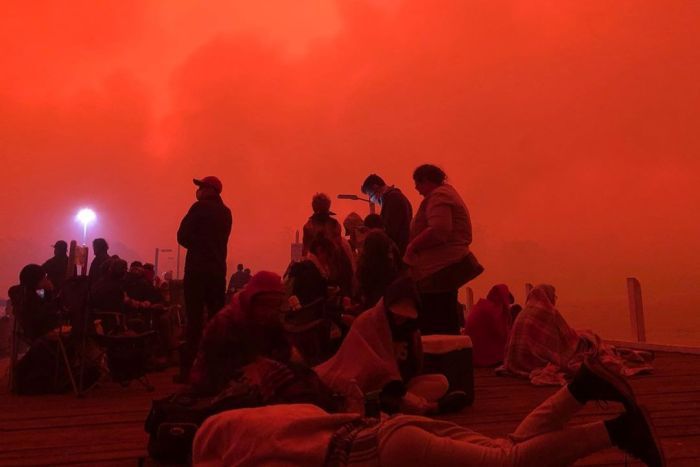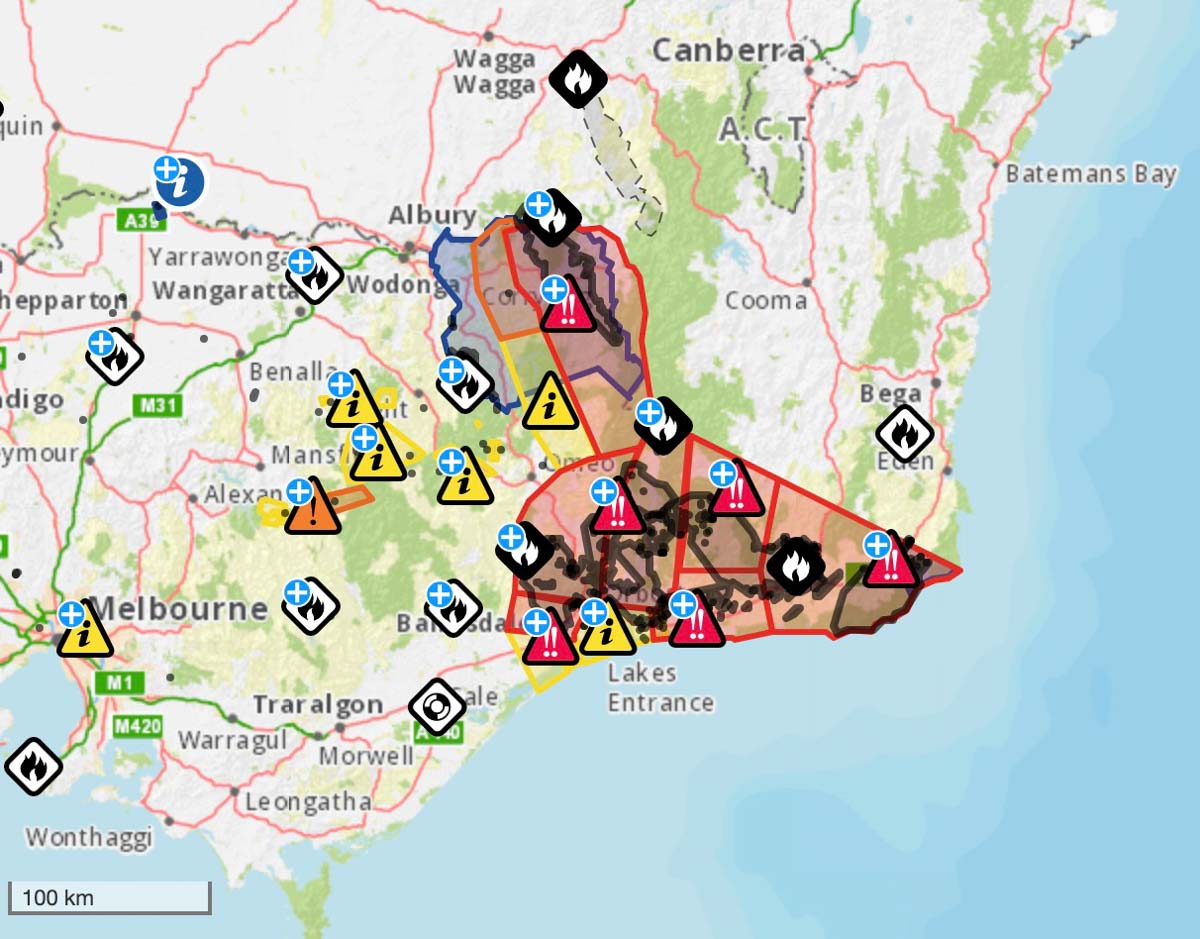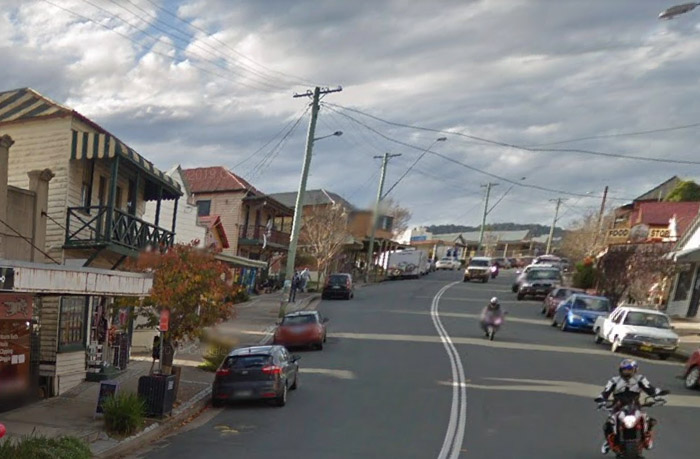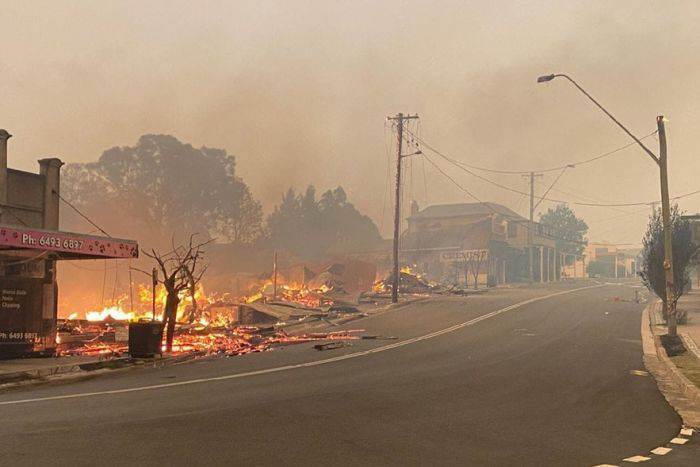
Very large bushfires continue to rapidly spread through areas of New South Wales and Victoria in southeast Australia, leaving behind hundreds of thousands of burned hectares, blackened forests, and destroyed structures in their wakes.
Victoria
Authorities in Victoria have confirmed that at least 43 structures have been destroyed in the Gippsland region where more than 400,000 hectares (988,000 acres) have burned. Many of the structures were in the Sarsfield and Buchan areas.
The military is being activated to assist firefighters and the public. The Australian Defense Force will deploy Black Hawk and Chinook helicopters, as well as fixed-wing aircraft and Navy vessels for firefighting support and evacuations. Authorities were considering using helicopters to fly in food and other supplies to people cut off by fires and road closures. Over the last few weeks fire aviation specialists from the United States and Canada have arrived in Australia help manage aircraft.

In Mallacoota, a coastal community popular with vacationers, an estimated 4,000 to 5,000 people were directed to evacuate and take refuge on the beach. They endured dense smoke that turned day into night as the fire spread into the outskirts of the town, sparing most of the buildings as it passed by the area.

Thousands of people have been left without power in East Gippsland, which AusNet said may not be restored for days.
Country Fire Authority chief officer Steve Warrington said the main fire front has passed the town of Corryong in northeast Victoria near the NSW border after destroying an unknown number of homes on the outskirts of community. An evacuation center was set up at Corryong College.
One resident described the situation in Corryong as “an absolute mess. Fires are everywhere but the town was standing strong.”
New South Wales
At least 40 homes appear to have been destroyed by fires in Conjola Park on the south coast of NSW as the fire burned through on December 31. Many residents fled to the beach.
An unknown number of structures have burned in Cobargo, including some of those along Princes Highway, the main street going through the town.


Two men, a father and son, were killed in the Cobardgo area where they had remained to defend their property. Patrick Salway, 29 and his father Robert, 63, perished at the family property at Wandella, about 10 kilometers northwest of Cobargo as the 82,000-hectare (202,000-acre) Badja Forest Road fire approached Monday night.
Police said Patrick’s mother discovered the men’s bodies when she returned to the burnt-out property Tuesday morning.
An excerpt from an article at the Australian Broadcasting Network:
Susanne Lewington, who owns the Breakfast Creek Vineyard in Bermagui, near Cobargo, was forced to evacuate her property at 5 am. She is now at a shelter down the road and does not know if the devastation has reached her property.
“It’s very eerie down here, it’s really smoky, there’s ash everywhere,” she said. “I have no idea if we’ve lost our property. If we have a wind change it could go because we’ve very close to the creek and we’re close to the forest. The sky was black, we only got daylight a few hours ago.”
She said the drought had left her property without any significant water bodies that may have helped dampen the blaze.
“There’s not much left on the property, about 100 ducks, four cattle and 10 sheep, that’s all we’ve got left because I had to sell the rest due to the drought,” she said. “We’ve got no water left so we weren’t able to defend.”
Andrew Crisp, Vic Emergency Mgt Commission in Australia, said they have ordered fire aviation specialists from US and Canada, and firefighters “who can work in remote and arduous conditions”. Presumably in addition to previous orders. At 3:10 in the audio: https://t.co/0mkhgzNQnJ
— Wildfire Today ? (@wildfiretoday) December 31, 2019

If this is the new normal I don’t see how it’s a tenable situation either from a fire service organizational or ecological level.